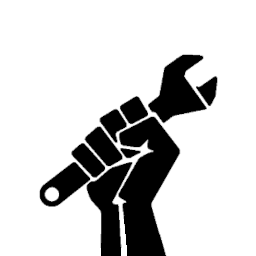cross-posted from: https://slrpnk.net/post/21031468
SSDs can only tolerate a certain number of writes to each block. And the number is low. I have a 64gb SSD that went into a permanent read-only mode. 64gb is still today a very useful capacity. Thus the usefulness is cut short by hardware design deficiencies.
Contrast that with magnetic hard drives which often live beyond the usefulness of their capacity. That is, people toss out working 80mb mechanical drives now because they’re too small to justify the physical space they occupy, not because of premature failure ending the device’s useful life.
Nannying
When an SSD crosses a line whereby the manufacturer considers it unreliable, it goes into a read-only mode which (I believe) is passworded with a key that is not disclosed to consumers. The read-only mode is reasonable as it protects users from data loss. But the problem is the nannying that denies “owners” ultimate control over their own property.
When I try to
dd if=/dev/zero of=/dev/mydrive, dd is lied to and will write zeros all day and report success, butdd’s instructions are merely ignored and have no effect.The best fix in that scenario would generally be to tell the drive to erase itself using a special ATA command, like this:
$ hdparm --security-erase $'\0' /dev/sdb security_password: "" /dev/sdb: Issuing SECURITY_ERASE command, password="", user=user SG_IO: bad/missing sense data, sb[]: 70 00 01 00 00 00 00 0a 00 00 00 00 00 1d 00 00 00 00 00 00 00 00 00 00 00 00 00 00 00 00 00 00 SG_IO: bad/missing sense data, sb[]: 70 00 0b 00 00 00 00 0a 00 00 00 00 00 00 00 00 00 00 00 00 00 00 00 00 00 00 00 00 00 00 00 00Not sure why my null char got converted to a yen symbol, but as you can see the ATA instruction is blocked.
Here is a take from someone who endorses the nannying. The problem is that there is a presumption on how the drive will be used. Give me a special switch like:
$ hdparm --security-erase $'\0' --I-know-what-I-am-doing-please-let-me-shoot-myself-in-the-foot /dev/sdband this is what I would do:
$ dd if=KNOPPIX_V8.2-2018-05-10-EN.iso of=/dev/foo $ hdparm --make-read-only /dev/fooWhen the drive crosses whatever arbitrary line of reliability, it’s of course perfectly reasonable to do one last write operation to control what content is used in read-only mode.
5 years later when a different live distro is needed, it would of course be reasonable to repeat the process. One write every ~5 years would at least keep the hardware somewhat useful in the long term.


Yes, that would be a compelling point did I not, twice, tell you your interpretation of my quote is incorrect and go on to clarify it as an example. I think this makes your intentions clear enough that it isn’t worth continuing wasting time on. All I’ll say is I’m glad you have nothing to do with making the specifications for this sort of hardware and that it’s left to competent and educated engineers. Assault on repair, good lord lol.
Your words, quoted here again as proof that you have defined “repair” so narrowly as to exclude taking actions to restore a product to put back into service:
What is your mother tongue that is so far from English?
You are really lost here. We actually agreed on the engineering decision (which was the decision to have a fail safe trigger). Again, the point of contention is the management decision to block property owners from control over their own property after they recover their data – the management decision that forces useful hardware to be needlessly committed to e-waste after the data has been migrated. It is because you think the profit-driven management decision of a private enterprise is “engineering” makes you profoundly incompetent for involvement in engineering specs. But you might be able to do marketing or management at a company like Microsoft. Shareholders would at least love your corporate boot-licking posture and your propaganda rhetoric in framing management decisions as “engineering”.
But plz, stay away from specs. Proper specs favor the consumers/users and community. They are not optimized to exploit consumers to enrich corporate suppliers and generate landfill.